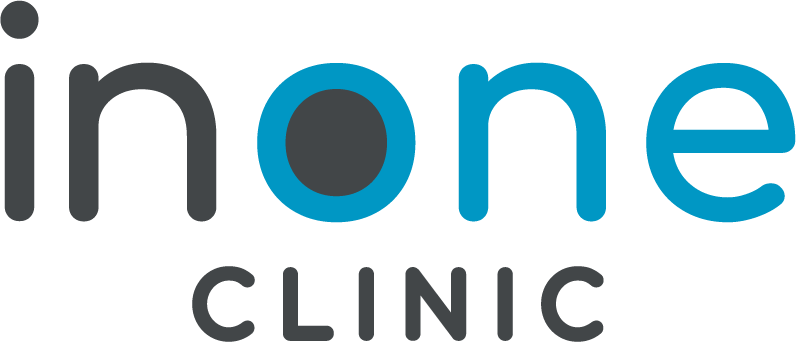In the world of health and wellness, physiotherapy is a discipline that is often shrouded in a fog of myths, misconceptions, and misunderstandings. In this article, we will delve into the truth behind physiotherapy, debunking common myths and highlighting its real benefits. Get ready to discover how this practice can transform lives and promote a better quality of life.
The Reality Behind the Myths
Myth 1: Physiotherapy is only for Sports Injuries: The reality is that while physiotherapy is effective for treating sports injuries, its scope is much broader. Physiotherapists are trained to treat a variety of musculoskeletal, neurological, and respiratory conditions, as well as to assist in postoperative rehabilitation and chronic pain management.
Myth 2: Physiotherapy is Only for Older People: Another common myth is that physiotherapy is exclusively for older people. However, individuals of all ages can benefit from physiotherapy, from babies with developmental issues to young adults with sports injuries or chronic pain. Physiotherapy is truly for everyone.
Myth 3: Physiotherapy is Painful and Ineffective: This is one of the most harmful myths. While some treatments may be uncomfortable, most techniques used in physiotherapy are designed to be safe and effective. In fact, numerous studies support the effectiveness of physiotherapy in pain relief and improvement of physical function.
Myth 4: Physiotherapy is Expensive and Inaccessible for All: Some people mistakenly believe that physiotherapy is an expensive and exclusive service that is only within reach of a few. However, many clinics offer flexible payment options and accept health insurance, making physiotherapy more accessible than one might think. Additionally, some countries offer public or subsidized physiotherapy services for those in need.
Myth 5: Physiotherapy is a Short-Term Solution: Another common myth is that physiotherapy only provides temporary relief and does not address the root of the problem. In reality, physiotherapists work to identify and treat the underlying causes of physical conditions, which can lead to long-term and lasting results. Through a comprehensive and personalized approach, physiotherapy can effectively and sustainably address physical challenges.
The Real Benefits of Physiotherapy
Benefit 1: Pain Relief
One of the greatest benefits of physiotherapy is its ability to alleviate pain. Through a combination of manual therapy techniques, therapeutic exercises, and physical modalities, physiotherapists can help reduce both acute and chronic pain, as well as improve mobility and function.
Benefit 2: Improvement of Physical Function
Another key benefit of physiotherapy is its ability to enhance physical function. Whether you’re recovering from an injury, surgery, or simply looking to improve your physical condition, physiotherapists can design a personalized treatment program to help you achieve your movement and performance goals.
Benefit 3: Injury Prevention
Physiotherapy not only treats existing injuries but can also help prevent future injuries. Physiotherapists can identify muscle imbalances, postural issues, or incorrect movement patterns that may predispose you to injuries, and work with you to correct these issues before they become a problem.
Benefit 4: Postoperative Rehabilitation
For those recovering from surgery, physiotherapy can play a vital role in the rehabilitation process. Physiotherapists can help restore function and mobility after surgery, reduce the risk of complications, and speed up recovery time.
Benefit 5: Improvement of Quality of Life
Ultimately, the goal of physiotherapy is to improve patients’ quality of life. By alleviating pain, improving physical function, and preventing injuries, physiotherapy can help you live a more active, healthy, and happy life.

Integrating Physiotherapy into Your Life
If you’re considering physiotherapy as part of your healthcare plan, here are some steps you can take to effectively integrate it into your life and not be swayed by the myths surrounding it:
1. Consult with a Physiotherapist: Schedule an appointment with a physiotherapist for a comprehensive assessment and a personalized treatment plan.
2. Commit to Treatment: Be consistent with your physiotherapy appointments and follow the physiotherapist’s recommendations at home.
3. Adopt a Preventive Approach: Don’t wait for an injury to occur before seeking help. Consider physiotherapy as a tool to keep your body in optimal condition and prevent future injuries.
4. Integrate Therapeutic Exercise: Incorporate the therapeutic exercises prescribed by your physiotherapist into your daily routine to improve your strength, flexibility, and endurance.
5. Listen to Your Body: Pay attention to the signals your body is sending you and don’t ignore pain or discomfort. Communicate any concerns or changes to your physiotherapist to adjust your treatment plan as needed.
Additional Points to Integrate:
Establish Realistic and Measurable Goals: Work closely with your physiotherapist to set clear and achievable goals for your treatment. Having specific and measurable objectives will help you maintain a clear focus and motivate you to stick to your physiotherapy plan.
Explore Telephysiotherapy Options: In the digital age, telephysiotherapy has become a convenient and accessible option for many patients. Consider exploring the possibility of having physiotherapy sessions via video conferencing, allowing you to receive treatment from the comfort of your home.
Incorporate Physiotherapy into Your Self-Care Routine: In addition to attending scheduled physiotherapy sessions, incorporate self-care practices into your daily life that complement your treatment. This may include regular stretching, breathing exercises, relaxation techniques, and mindful postural care.
By implementing these additional points, you can maximize the benefits of physiotherapy and improve your physical and emotional well-being holistically.
Conclusion: The Truth Behind Physiotherapy and Its Impactful Benefits
In conclusion, physiotherapy transcends the myths surrounding it; it’s more than just a simple solution for injuries or chronic pains. It’s a powerful tool for improving physical function, preventing injuries, and promoting an overall better quality of life. By debunking misconceptions and understanding the real benefits of physiotherapy, you can take the first step towards a healthier, more active, and pain-free life. Consult with a physiotherapist today and discover how physiotherapy can help you achieve your goals of physical and emotional well-being.

